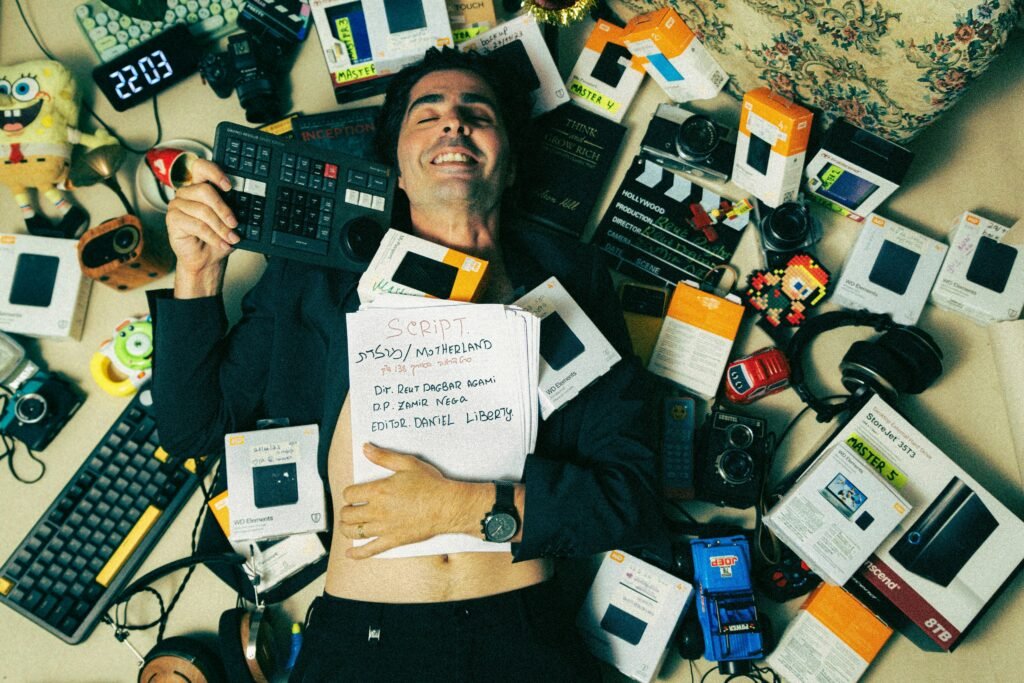
Introduction to Mindful Technology Usage
In today’s fast paced world, the omnipresence of technology in our lives is undeniable.
From smartphones and tablets to laptops and smartwatches, digital devices have become integral to our daily routines.
Yet, as we become more tethered to these gadgets, the challenge of maintaining a healthy balance becomes ever more critical.
Striking this balance is where mindful technology usage comes into play, offering a roadmap to enhance mental clarity and overall well-being.
Mindful tech habits aren’t about abandoning technology altogether; rather, they focus on using it more intentionally.
For instance, consider the times you find yourself mindlessly scrolling through social media or constantly checking your email.
These habits can not only drain your time but also impact your mental state, making you feel overwhelmed and distracted.
By incorporating mindful practices, you can reclaim some of that lost focus and improve your mental health.
One practical approach is to be more deliberate about when and how you use technology.
This can be as simple as setting specific times for checking emails or social media, rather than doing so impulsively throughout the day.
Being aware of these patterns allows you to use technology in a way that supports your well being rather than detracts from it.
Another aspect of mindful technology usage is recognizing the impact of screen time on your body.
Prolonged exposure to screens can lead to eye strain, headaches, and even disrupted sleep patterns.
Implementing regular breaks, often referred to as the 20-20-20 rule; taking a 20-second break to look at something 20 feet away every 20 minutes, can alleviate some of these physical symptoms.
Simple adjustments like this can make a significant difference in how you feel physically and mentally.
It’s also helpful to create environments that encourage mindfulness.
Establishing tech free zones in your home, such as the dining room or bedroom, can promote healthier habits.
These spaces can serve as sanctuaries from the constant buzz of notifications, allowing you to focus on other activities that bring you joy and relaxation.
For those who find it challenging to disconnect, there are numerous tools and apps designed to support mindful tech usage.
These can range from screen time trackers that alert you when you’ve hit your limit to mindfulness apps that guide you through relaxation techniques.
However, it’s crucial to use these tools judiciously, ensuring they aid rather than hinder your efforts to disconnect.
By integrating these mindful practices, you can foster a healthier relationship with technology.
This isn’t about imposing strict rules but rather about finding what works best for you.
By paying attention to how, when, and why you use digital devices, you can make choices that enhance your well-being and lead to a more balanced life.
Recognizing Technology Overload

It’s essential to be aware of when technology begins to dominate your daily life.
A significant concern is the amount of time teenagers spend connected to screens.
This level of connectivity can be overwhelming and contribute to stress.
Consider the real world examples around you: people checking emails during meals or scrolling through social media late into the night.
These habits not only interrupt personal interactions but also disrupt sleep patterns.
These signs of technology overload are crucial to recognize, as they can be the first indicators that your tech use may be affecting your well being.
Technology overload often manifests as an inability to disconnect.
You might find yourself compulsively reaching for your phone or feeling anxious when it’s not nearby.
This constant need to be “plugged in” can make it difficult to engage fully in offline activities, diminishing the quality of your interactions and experiences.
Another indicator of overload is the physical toll it can take.
Symptoms like eye strain, headaches, and even neck and back pain are common among those who spend long hours in front of screens.
These physical symptoms can serve as warning signs that it’s time to reassess your tech habits.
Emotional indicators are equally telling. Increased irritability, anxiety, and a general sense of being overwhelmed can all stem from too much screen time.
When technology starts to affect your mood and emotional state, it’s a clear signal that a change is needed.
For many, the concept of FOMO; fear of missing out, drives excessive tech use.
The constant stream of updates and notifications can create a sense of urgency and compulsion to stay connected, often at the expense of real world engagement.
Recognizing this fear as a factor in your tech use can help you address it more mindfully.
It’s also important to consider how technology affects your cognitive functions.
Continuous partial attention—constantly shifting focus from one screen to another; can lead to decreased productivity and mental fatigue.
The brain isn’t designed to handle constant multitasking, and this can result in a scattered and less effective use of your time.
By becoming more aware of these signs and symptoms, you can start to take control of your technology use.
Recognizing when you’re experiencing overload is the first step toward making more mindful choices about how and when you engage with digital devices.
Establishing Healthy Tech Boundaries

Establishing healthy boundaries with technology is crucial for maintaining balance.
One effective strategy is to set specific daily usage goals.
For instance, you could limit social media browsing to 30 minutes per day or designate certain hours when you’ll stay offline entirely.
Tracking your screen time can also be helpful.
Many devices come with built in features that allow you to monitor and manage your usage, giving you a clearer picture of where your time is going.
Creating tech free zones in your home is another impactful approach.
Areas like the dining room or bedroom can be designated as spaces where digital devices are not allowed.
This encourages more meaningful interactions with family members and promotes better sleep hygiene.
By making these areas sanctuaries from the digital world, you can enjoy activities that don’t involve screens, like reading a book or having a face to face conversation.
Setting boundaries also involves managing notifications.
The constant ping of alerts can be incredibly distracting, pulling you away from important tasks and interrupting your focus.
Consider turning off non essential notifications or setting your device to “Do Not Disturb” mode during work hours or family time.
This simple change can significantly reduce distractions and help you stay more present in the moment.
In addition to creating physical and temporal boundaries, it’s essential to cultivate mental boundaries.
This means being mindful of the emotional triggers that lead you to overuse technology.
For example, if you find yourself reaching for your phone when you’re stressed or bored, try to identify the underlying cause and address it directly.
Activities like deep breathing exercises, stretching, or taking a short walk can be effective alternatives to compulsively checking your device.
Engaging in regular self assessments can also be beneficial.
Periodically evaluate how you feel about your tech use.
Are you more anxious or irritable? Are you finding it difficult to concentrate?
These check-ins can help you adjust your habits and ensure that your technology use aligns with your well being goals.
For families, establishing tech free times can foster better communication and connection.
Consider implementing a no devices policy during meals or family gatherings.
This allows everyone to engage fully with each other, strengthening relationships and creating a more cohesive family unit.
Workplaces can also benefit from clear tech boundaries.
Encourage the practice of “digital sunsets,” where employees disconnect from work related communications after a certain time.
This can help create a healthier work-life balance and reduce burnout.
Lastly, be mindful of the content you consume.
Aim to engage with material that enriches your life and supports your mental health.
Curate your social media feeds to include accounts that inspire and uplift you, rather than those that contribute to stress or negativity.
By taking control of what you allow into your digital space, you can create a more positive and balanced relationship with technology.
Mindful Tech Practices for Enhanced Well Being

One effective mindful tech practice is setting aside specific times for a digital detox.
This means intentionally stepping away from all screens to engage in activities like reading, walking, or practicing meditation.
By incorporating these regular breaks, you can reduce digital fatigue and enhance your mental clarity.
Using mindfulness apps can also support your journey towards balanced tech use.
These apps often include guided meditations, relaxation techniques, and reminders to take breaks.
However, it’s important to use them in moderation.
Practicing mindful breathing exercises is another technique to enhance well being.
When you find yourself feeling overwhelmed by technology, take a few moments to focus on your breath.
Deep, slow breaths can help center your mind and reduce anxiety, making it easier to disconnect from your devices.
Establishing morning and evening routines that do not involve screens can set a positive tone for your day and promote better sleep at night.
Instead of reaching for your phone first thing in the morning, try starting your day with a few minutes of meditation or a short walk.
Similarly, winding down with a book or gentle stretching in the evening can prepare your mind for restful sleep.
It’s also helpful to periodically evaluate your digital habits.
Conducting regular self assessments can provide insights into how your tech use affects your mental and emotional state.
Are you feeling more anxious or distracted?
Are you experiencing physical symptoms like eye strain or headaches?
These evaluations can guide you in making necessary adjustments.
Incorporating mindful moments throughout your day can also make a significant difference.
This can be as simple as pausing to take a few deep breaths before opening your email or consciously setting your phone aside during meals.
These small, intentional actions can help you stay present and focused.
Additionally, engaging in hobbies that don’t involve screens can provide a much needed break from technology.
Whether it’s gardening, painting, or cooking, these activities can offer a creative outlet and promote a sense of accomplishment and relaxation.
By integrating these mindful tech practices into your daily life, you can foster a healthier and more balanced relationship with your digital devices, enhancing your overall well-being.
Benefits of Balancing Tech Use with Mindfulness

When you balance technology use with mindfulness, the benefits can be profound.
Mindful tech habits often lead to improved focus and productivity.
By reducing distractions, individuals can concentrate better on tasks, leading to more efficient and effective work.
Furthermore, there are positive effects on relationships and social interactions.
When people disconnect from their devices, they become more present in conversations and activities, fostering deeper connections with others.
An additional benefit of mindful tech practices is improved mental health.
Constant connectivity can lead to feelings of anxiety and stress.
By setting boundaries and taking regular breaks from screens, you allow your mind to rest and rejuvenate.
This can result in reduced stress levels and a more balanced emotional state.
Physical health also benefits from mindful tech usage.
Prolonged screen time is linked to eye strain, headaches, and disrupted sleep.
Incorporating regular breaks and creating tech free zones can mitigate these issues, promoting better physical well being.
The 20-20-20 rule; taking a 20 second break to look at something 20 feet away every 20 minutes, can alleviate some of the physical strain caused by long hours in front of screens.
Engaging in offline activities during your digital detox periods can provide a sense of fulfillment and relaxation.
Whether it’s spending time in nature, engaging in creative hobbies, or simply enjoying a meal without distractions, these activities can bring joy and a sense of peace that screens often can’t provide.
Another significant advantage is the positive impact on sleep.
The blue light emitted by screens can interfere with the body’s natural sleep cycle.
By establishing screen free times, especially before bed, you can improve your sleep quality.
Better sleep, in turn, enhances mood, cognitive function, and overall health.
Mindful tech use also fosters greater self awareness.
As you become more intentional about how and when you use technology, you start to recognize patterns and triggers that lead to excessive screen time.
This self awareness enables you to make more informed choices, aligning your tech use with your well being goals.
Financial well-being can also see improvements.
Less time spent online can lead to reduced impulse buying and a more mindful approach to spending.
This can contribute to better financial health and reduced stress related to money.
Lastly, mindful tech habits can lead to a greater appreciation for the present moment.
By stepping away from screens, you open yourself up to the richness of real world experiences, making life feel more vibrant and meaningful.
Practical Steps for a Digital Detox

Taking steps toward a digital detox can be both simple and life changing.
One effective strategy is to designate specific times during the day when you completely disconnect from your devices.
Start small, perhaps with 15-30 minute intervals, and gradually increase this time as you become more comfortable.
Another practical approach is to create a digital free morning routine.
Instead of immediately reaching for your phone upon waking, take a few moments for yourself.
Engage in activities like stretching, reading, or enjoying a quiet cup of coffee.
This sets a positive tone for the day and reduces the urge to dive into the digital world right away.
During work hours, consider using techniques like the Pomodoro method, where you work for 25 minutes and then take a 5-minute break away from screens.
This not only boosts productivity but also gives your eyes and mind a needed rest.
Implementing tools like website blockers can help you stay focused by limiting access to distracting sites during these work intervals.
For families, instituting device-free dinners can foster better communication and connection.
Make mealtimes an opportunity to engage in meaningful conversations, sharing stories and experiences without the interruption of screens.
This simple practice can significantly enhance the quality of your interactions and relationships.
Another valuable step is to evaluate and curate the content you engage with.
Unsubscribe from newsletters that clutter your inbox and unfollow social media accounts that don’t contribute positively to your well being.
By intentionally choosing the digital content you consume, you create a more positive and enriching online environment.
Physical spaces play a crucial role in a successful digital detox.
Designate specific areas in your home where devices are not allowed, such as the bedroom or the dining area.
This helps create a sanctuary from the constant stream of notifications and allows you to engage in activities that promote relaxation and mindfulness.
Engaging in hobbies that don’t involve screens can also provide a refreshing break from technology.
Whether it’s gardening, painting, or playing a musical instrument, these activities offer a creative outlet and help you reconnect with yourself and your surroundings.
Lastly, practice mindful breathing or meditation whenever you feel the urge to check your devices unnecessarily.
These techniques can help ground you in the present moment, reducing the compulsion to reach for your phone and enhancing your overall sense of well being.
By integrating these practical steps into your daily routine, you can achieve a more balanced and mindful relationship with technology, ultimately leading to a healthier and more fulfilling life.
